Content
Rose Augustine Louise, since its inception, has won the recognition of many rose growers with large double flowers, which are very diverse in color. It comes in golden shades of champagne, peach and pink. Has a long-lasting rich aroma. The rose is resistant to diseases and pests, but does not feel well after rain and when exposed to direct sunlight. It is characterized by long flowering.
Breeding stories
Rose Augusta Luise (Augusta Luise) is distinguished by abundant and long flowering and therefore is very popular with many flower growers. Flower lovers owe this rose to German breeders. It was received in 1999 by the Tantau company with the participation of the scientist Hans Jürgen Evans. He dedicated Rosa Louise to the upcoming event - the 250th anniversary of the birth of Goethe. The culture acquired its name from a certain person - the aristocrat Augusta Louise von Stolberg-Stolberg, who was in a long correspondence with the famous philosopher and thinker.
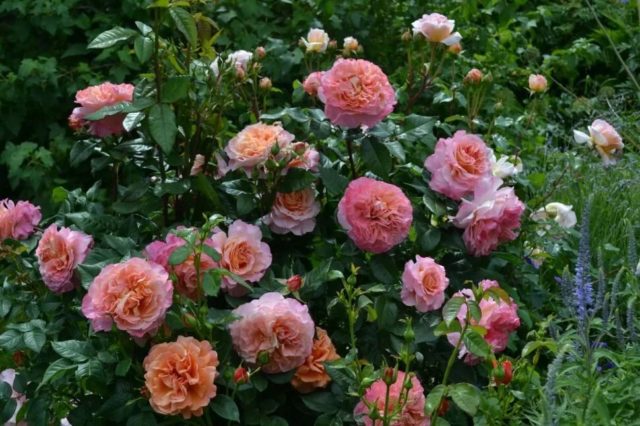
Louise Augusta goes well with other varieties
However, it is known for certain that this flower first appeared in France in 1867. Bred by the scientist-breeder Guyot. But then the rose did not take root. It was re-obtained by crossing a tea and a remontant rose.
Since the early 2000s, the Augusta Louise rose has received a huge number of world awards, several times it was recognized as the best - for a persistent aroma and for a quality variety among hybrid tea roses. She immediately took the first positions in the market. Lovers of this culture should keep in mind that the rose is known under the names Hayley, Fox-Trot, Rachel, Westenra.
Description of the rose variety Augusta Louise and characteristics
In any garden, the hybrid tea rose of Augusta Louise looks aristocratic. The flowers are well recognized among other roses by their appearance and unique aroma. The bush reaches a meter in height, its width is within 70 cm. The leaf plate is dense, glossy, dark green in color. During flowering, the rose smells good. The aroma is persistent, mostly fruity.
The flowering period is the entire summer season, including September. Augusta Louise differs from other varieties in large double flowers. The shades of the petals change depending on the weather, the age of the bush and the time of day from pink to beige and peach. Often the colors shimmer, turning into golden hues at sunset. Many gardeners notice that the color is directly dependent on the quality of the soil. If the soil is not fed, the nutrition of the bush is poor, then the shades are pale. With timely feeding, the color of the petals is more complex and saturated.
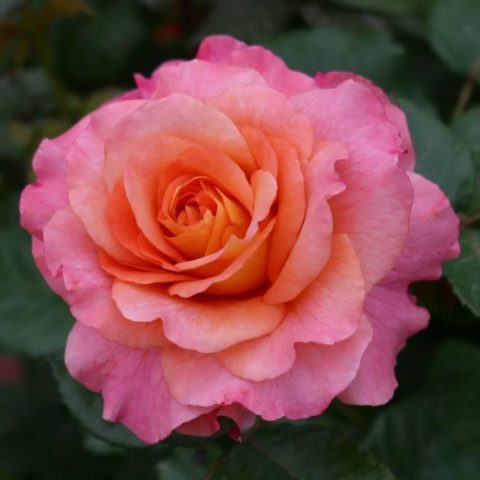
Augusta Louise's petals are predominantly apricot in color.
Each flower has 40 petals, which open gradually during flowering, eventually forming an incredible splendor. The flower reaches 12 cm or more in diameter. Therefore, Augusta Louise is considered the largest among hybrid tea roses. Gardeners note the undulating flowering of this variety. It consists of three periods. Moreover, the first and second waves are the longest and most abundant, the third is not so active, but lasts until October.
Advantages and disadvantages
Like any flower, the Augusta Louise standard rose has some disadvantages:
- does not tolerate long heavy rains;
- direct sunlight can be detrimental to the plant;
- petals have a rich color only in the presence of fertile soil;
- the aroma is revealed in full force if the bush is located in partial shade.
The advantages of the rose are its good resistance to diseases and attacks of insect pests, and the bush also tolerates frosts without requiring additional shelter. But one of the most important advantages and features of the variety is gorgeous flowering.
Reproduction methods
You can propagate a rose of this hybrid variety only by cuttings. With the vegetative method of Augusta, Louise will pass on all her parental qualities. Cuttings should be obtained from young bushes immediately after the first flowering.
Having chosen a strong stem, you need to pay attention to the thorns. They indicate the ability to root quickly if it separates well from the shoot. Next, the selected branches must be divided into cuttings. Each should be from 5 to 15 cm, have from 3 buds and leaves. The bottom cuts should be made at an angle.
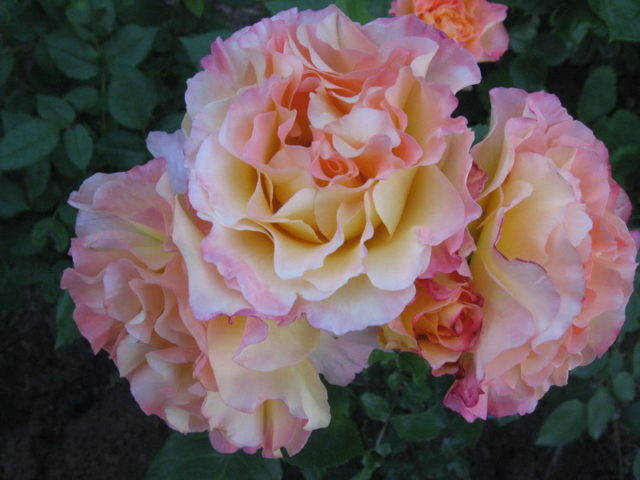
The flowers of the plant are dense and full
It is important to work with a sharp tool, having previously processed the blade. All cuttings should be placed in a container with water and a growth stimulant for several hours. This should be followed by the rooting process. It can be done in different ways: in the ground, in potatoes, in water and in a bag. Rooting results in a strong root system of the rose, ready to grow outdoors.
Growing and care
To grow a beautiful and healthy rose, it is important to correctly determine the place of growth before planting. Rose Augustine Louise loves a lot of light, she needs it for proper development, while she cannot stand the direct rays of the sun. It is imperative to take care of the soil. It should be fertile, loose, with the addition of peat, humus, sand.
Caring for the variety consists in periodically loosening the soil, regular feeding, and the correct irrigation regime. Preventive treatment of the plant from pests and diseases is important. If necessary, you will need a support for the shrub, and in winter, a shelter from frost.
It is recommended to perform it in two ways: with the bending of the stems to the ground and without it. The shoots must first be cut off, and spruce branches, dry foliage and spandbond should be used as a covering material.
How to prune a rose Augusta Louise correctly
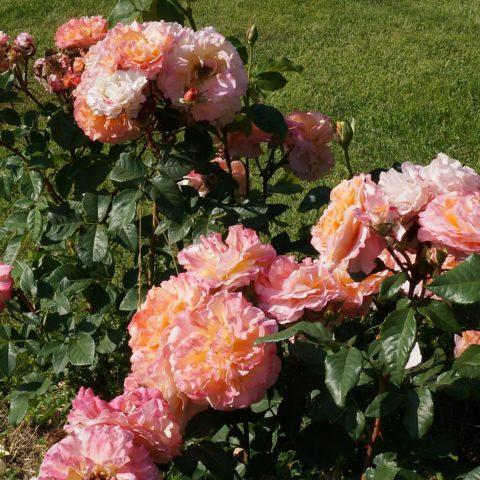
The maximum height of a bush of the Augusta Louise variety is 1.2 m
A full pruning of the Augustine Louise hybrid tea rose should be done in the spring, as soon as the snow melts and the buds begin to set. Based on the main goal (forming a bush or ensuring early flowering), pruning can be short, moderate and long.
With strong pruning (short), 2-4 buds are left on the shoot. It is necessary for the rejuvenation of the age bush and is produced in the spring. Moderate pruning is used when forming a bush. As a result, 5-7 buds should remain on the shoots. It is capable of providing high decorative effect. Long can be done during the summer. Its purpose is to remove faded buds.
Autumn pruning is required after the end of the flowering season. It is called sanitary, because weak, diseased, dry and rotten branches should be removed during the work.
Pests and diseases
Augusta Louise is resistant to parasites and diseases. But this does not mean that the bush will always be healthy. Inaccuracies in care affect the predisposition to insect attacks and infections. As a result, the rose weakens, immunity decreases and the risk of developing ailments increases.
Of the pests for roses, aphids are dangerous. To destroy it, you can use folk remedies, pruning, but if the case is started, then chemical preparations will be required.
Young shrubs are often prone to black spot and powdery mildew.Fortified roses, these diseases do not threaten.
Reviews of reviews allow us to conclude that the rose takes root well in the northern regions.
Park rose Augusta Louise in garden landscaping
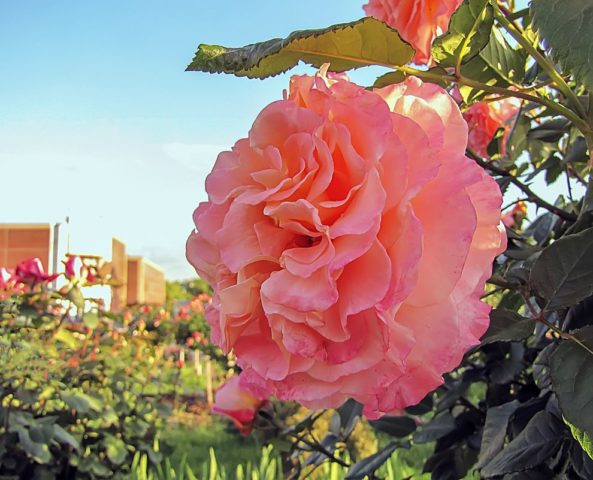
Augusta Louise is characterized by a persistent rich aroma, provided it grows in partial shade.
For many landscape designers, this variety is the most desirable. In addition to the fact that Augusta Louise is distinguished by beautiful large flowers, it is in perfect harmony with other varieties of roses, as well as with small evergreen shrubs.
Augustine Louise is used to decorate gazebos, swings, bushes are planted along the fence, near terraces or garden paths. It looks great as a hedge.
Conclusion
Rose Augustine Louise has long won the recognition of many gardeners. Despite the immense popularity of all hybrid tea varieties of roses, they have some drawbacks that are difficult for true rose growers to accept. But Augustine Louise was not without reason recognized as the best among many other roses at exhibitions. Its main advantages are very large flowers, which sometimes reach 18 cm in diameter, as well as an extraordinary fruity aroma. That is why the rose has become a welcome guest on many garden plots.








